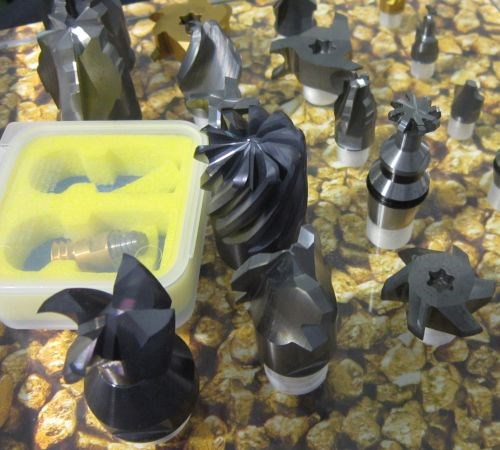CVD Out, PVD In
According to a coating specialist at one cutting tool manufacturer, the advantages of PVD coating increasingly outweigh those of its CVD counterparts, at least for milling.

Milling tools like these offerings from Ingersoll will be increasingly likely to feature PVD coatings rather than CVD.
When Robert Sullivan, manager of coating technology at Ingersoll Cutting Tools, asked a group of moldmakers whether anyone uses CVD-coated cutters for milling, no one raised a hand. That response, he says, is in keeping with a general industry trend toward a preference for PVD coatings, at least when it comes to milling.
The group he queried consisted of manufacturers attending Ingersoll’s mid-July Die & Mold Seminar, an annual, day-and-a-half-long series of educational presentations and live demonstrations that was well-worth attending. As part of the event, the group took a tour of the cutting tool manufacturer’s plant, where they got a first-hand look at PVD equipment purchased in 2012. Among other advances, the new technology has significantly improved coating adhesion, historically a weak area of PVD.
Now that what Sullivan calls the “Achilles heel” of PVD isn’t as much of a problem, its advantages are more pronounced. Chief among those is the fact that the PVD coating process occurs at a much lower temperature than CVD. Lower temperatures have less of an impact on the toughness of the underlying carbide substrate. On the shop floor, that translates to improved performance in interrupted cuts and work that requires fine finishes and tight tolerances.
Sullivan emphasized that CVD tools are still just fine for turning operations, and that these tools perform particularly well in high speed, uninterrupted roughing cuts in materials like cast iron and steel. Still, judging from his comments and feedback from the assembled attendees, PVD has a much brighter future as far as milling is concerned.











